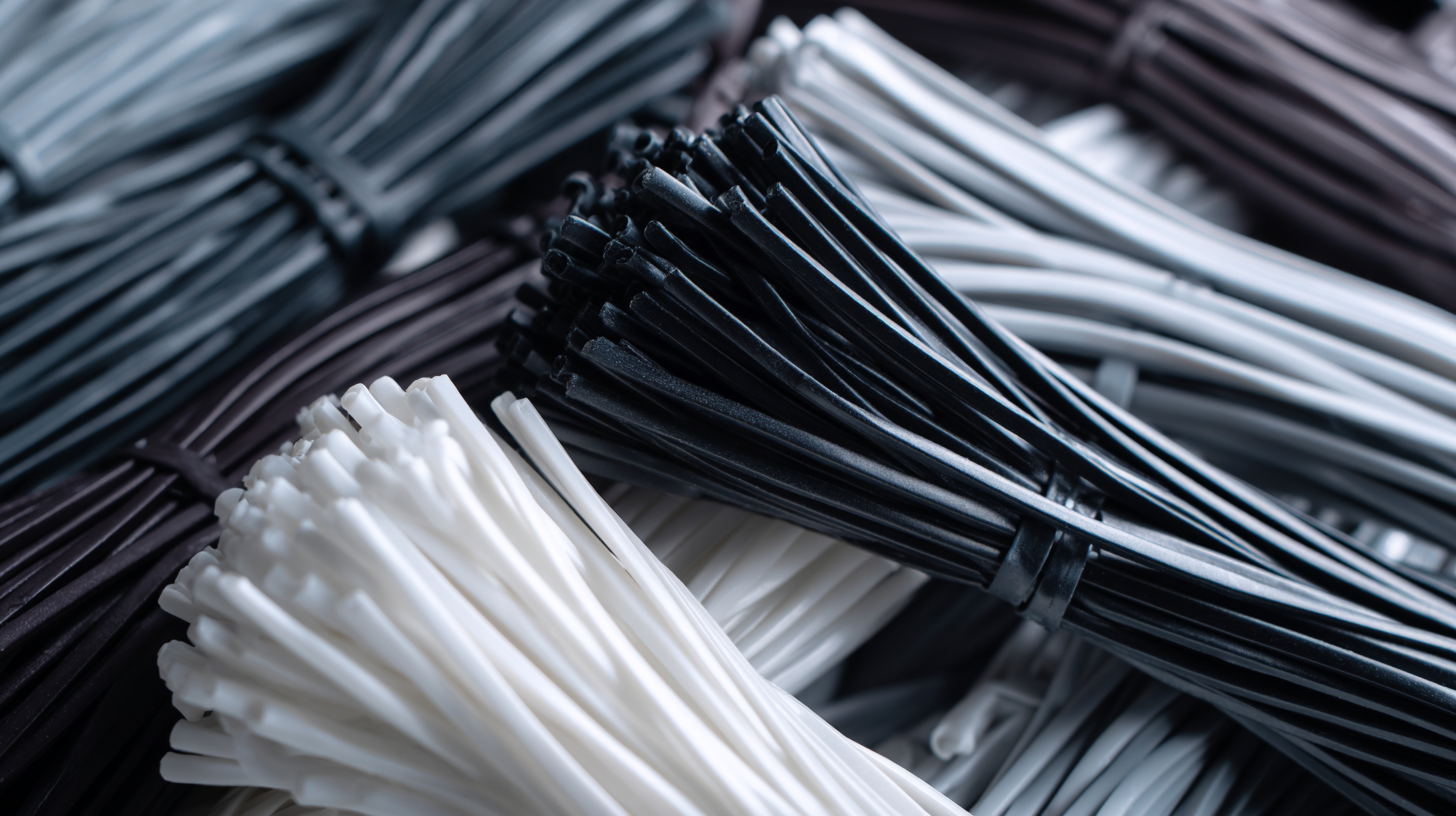7 Facts About Plastic Ties That Will Change Your Perspective on Their Durability and Versatility
When it comes to versatile tools that offer both durability and utility, plastic ties often do not receive the recognition they deserve. These seemingly simple items have become indispensable in a variety of applications, from home organization to industrial use. Understanding the multifaceted nature of plastic ties can significantly change our perspective on their potential. Not only are they exceptionally durable, able to withstand various conditions and stresses, but they also come in an array of sizes, colors, and strengths to meet diverse needs. This exploration into the world of plastic ties uncovers fascinating facts about their material properties, functionality, and innovative uses that extend far beyond mere bundling and securing. By delving into these insights, we can appreciate how plastic ties play a crucial role in our everyday lives, enhancing both efficiency and creativity in countless ways.

The Incredible Strength: Understanding the Load-Bearing Capacity of Plastic Ties
Plastic ties, often overlooked in the realm of fastening solutions, possess remarkable load-bearing capacity that defies common perceptions. Designed with advanced materials, these ties can withstand considerable weight, making them suitable for a wide array of applications beyond merely bundling cables. The tensile strength of high-quality plastic ties can reach impressive limits, allowing them to support hefty loads in various industrial, commercial, and outdoor settings.
Understanding the strength of plastic ties involves recognizing their ability to distribute weight evenly and prevent slippage. This capability makes them invaluable in construction, where they secure beams and pipes, as well as in landscaping projects, where they hold together branches and support plant growth. With innovative designs and engineered durability, plastic ties have evolved into trusted tools that combine versatility with dependable strength, reshaping how we view their role in everyday tasks and professional environments alike.
Versatility Across Industries: How Plastic Ties Are Used in Various Applications
Plastic ties, commonly known as zip ties, have gained significant recognition for their versatility across various industries. According to a report by Grand View Research, the global plastic ties market was valued at over $4 billion in 2021, with analysts predicting a robust growth rate as more industries discover their utility. From construction to electronics, plastic ties serve critical functions such as bundling, securing, and organizing components, making them an indispensable tool.
In the automotive and aerospace sectors, plastic ties are favored for their lightweight and durable properties. A study by the Plastic Industry Association highlights that these fasteners can withstand temperatures ranging from -40°F to 185°F, ensuring reliability even under extreme conditions. Their use in cable management systems reduces clutter and enhances safety in vehicles, promoting both efficiency and organization. Furthermore, with the rise of eco-friendly materials, the market for biodegradable plastic ties is also on the rise, reflecting an industry trend towards sustainable practices while maintaining the versatility that plastic ties offer across applications.
Weather Resistance: The Impact of Environmental Conditions on Plastic Ties' Longevity
When it comes to plastic ties, one of the most significant factors influencing their longevity is weather resistance. Various environmental conditions, including UV exposure, temperature fluctuations, and humidity, can greatly affect the integrity of these versatile tools. According to a study conducted by the Plastics Industry Association, plastic ties specifically designed for outdoor use can withstand UV radiation for over 1,000 hours without significant degradation. This makes them an ideal choice for long-term applications in inhospitable environments.
Moreover, temperature extremes pose another challenge to plastic ties. Research from the American Society for Testing and Materials (ASTM) indicates that certain high-quality plastic ties can maintain their strength and flexibility in temperatures ranging from -40°F to 185°F (-40°C to 85°C). This wide-ranging temperature resilience demonstrates their versatility in various applications, including construction and outdoor events. The ability to endure extreme weather conditions while retaining functionality makes plastic ties a reliable solution for both temporary and permanent installations.
7 Facts About Plastic Ties That Will Change Your Perspective on Their Durability and Versatility
| Fact | Details | Environmental Impact |
|---|---|---|
| Weather Resistance | Plastic ties are designed to withstand various weather conditions, including rain, wind, and UV exposure. | Durability under UV light can extend the lifespan of plastic ties outdoors, reducing the frequency of replacements. |
| Temperature Tolerance | High-quality plastic ties can function in a wide range of temperatures, from -40°F to 185°F. | Extreme temperatures can affect the tensile strength and flexibility of plastic ties, making material choice crucial. |
| Chemical Resistance | Many plastics resist breakdown from chemicals found in agricultural and industrial environments. | Exposure to harsh chemicals can degrade plastic ties unless they are specifically formulated for chemical resistance. |
| Adjustability | Plastic ties can be tightened to secure items without damaging them, making them highly versatile. | In fluctuating environments, the ability to adjust ties helps maintain secure connections. |
| Longevity | With proper care, high-quality plastic ties can last for several years in outdoor conditions. | Environmental factors such as humidity and exposure to elements can influence their longevity. |
| Reusable Options | Some ties are designed for reusability, offering a sustainable choice for multiple applications. | Reusability contributes to reducing waste and the environmental impact of single-use plastic ties. |
| Customization | Plastic ties can be produced in various colors and sizes for specific applications. | Color coding can help manage tasks and improve organization in changing environments. |
Reusability and Eco-Friendliness: Rethinking Plastic Ties for Sustainable Practices
Plastic ties, often overlooked as mere single-use items, offer intriguing possibilities for reusability and eco-friendliness. Many consumers are not aware that these versatile tools, designed initially for temporary binding, can be repurposed effectively in various applications. From organizing cables to securing garden plants, reusing plastic ties can significantly reduce waste, allowing us to leverage their durability and strength beyond their initial use.

Moreover, innovative thinkers have started developing eco-friendly alternatives to traditional plastic ties, made from biodegradable materials and designed to maintain the strength and utility of standard plastic options. This shift not only enhances the sustainability of the products but also encourages a broader acceptance of plastic ties as an environmentally conscious choice.
Rethinking the way we utilize and dispose of plastic ties can contribute to sustainable practices that help reduce plastic pollution and promote a circular economy. Such advancements highlight how we can adapt our approaches to common items to foster a greener future.
Innovative Uses: Unconventional Ways to Utilize Plastic Ties in Everyday Life
Plastic ties, often underestimated, have a surprising range of innovative uses that can enhance our everyday lives. Beyond their traditional role in bundling items together, these versatile tools can be repurposed for a variety of creative applications. For instance, they can serve as makeshift zippers for jackets or bags, providing a quick fix during emergencies. Additionally, plastic ties are perfect for organizing cables and wires, helping to declutter your workspace while maintaining a tidy appearance.
Moreover, plastic ties can be employed in gardening as a support system for plants. By securing stems to stakes or other supports, they can aid in the growth of climbing plants, ensuring they flourish without breaking. In the kitchen, they can be used to seal bags of snacks or ingredients, keeping them fresh for longer periods. From DIY projects to everyday solutions, plastic ties offer a blend of practicality and innovation, proving that these simple tools can be much more than what they initially appear to be.







